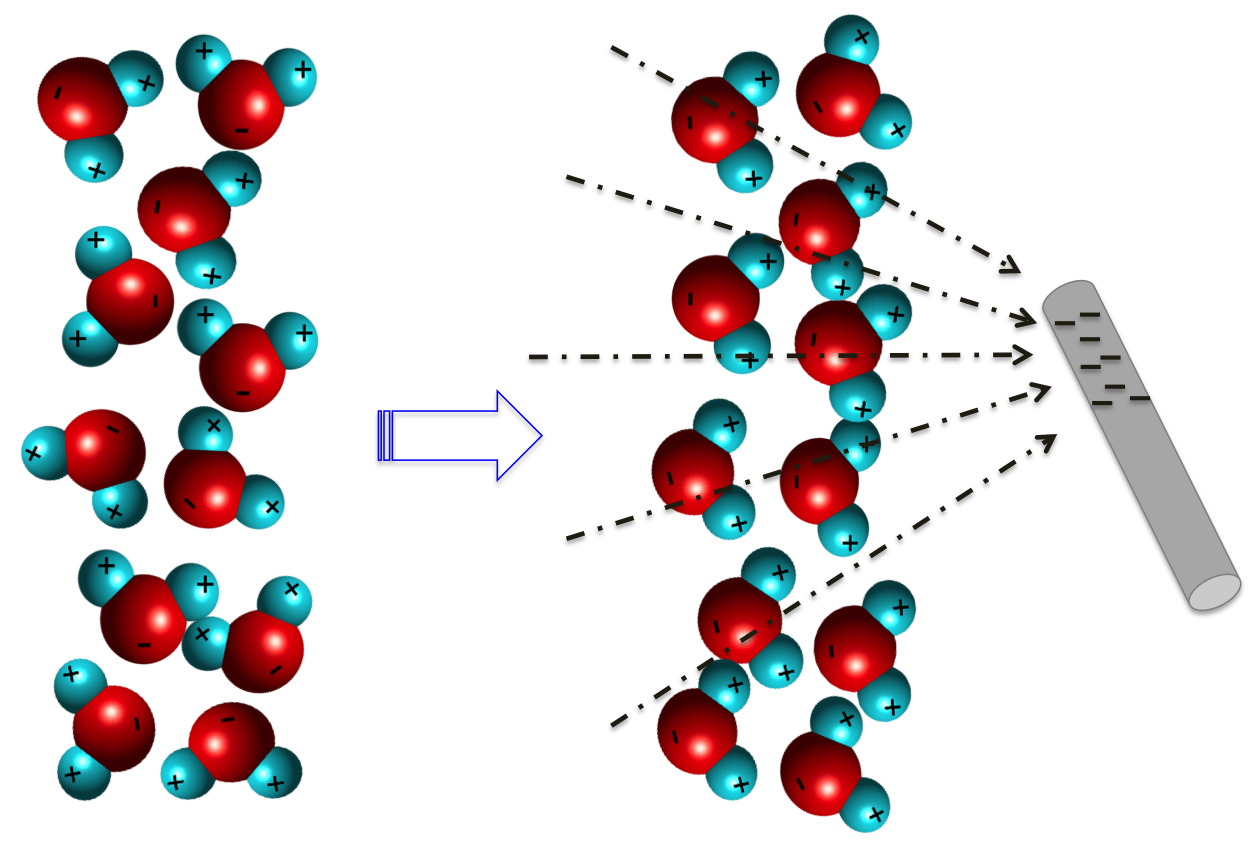Most of us have heard about bending water stream using static electricity, likely during our general physics course. What is it about and how does it work? Let’s look at a cool Youtube video demonstrating the phenomena first.
So, how doest his happen?
From the very basic, all materials are made of atoms. Every atom has a positively charged nucleus and some negatively charged electrons moving around the nucleus. Note that different atoms hold onto their electrons with different strength (electronegativity of the atom), which means that the material they make up holds onto the electrons with different strength. When we rub two materials together, like that shown in the video, electrons transfer occurs. One material looses electrons to the other, becoming positively charged while the other becoming negatively charged.
Note: both materials have to be insulating for this demonstration to work.

Suppose the PVC pipe as shown in the video becomes negatively charged, the charges creates an electric field in space that points towards them. Under the electric field, the positive H ions in a water molecule (H2O) are attracted towards the negatively charged pipe, while the negatively charged O ions are repelled away from the pipe (opposite charges attract each other, same charges repel each other). Since the electric field is stronger at locations nearer to the source charges (PVC pipe in this case), the attraction force is larger than the repulsion force, thus the water molecules are pulled towards the pipe.
